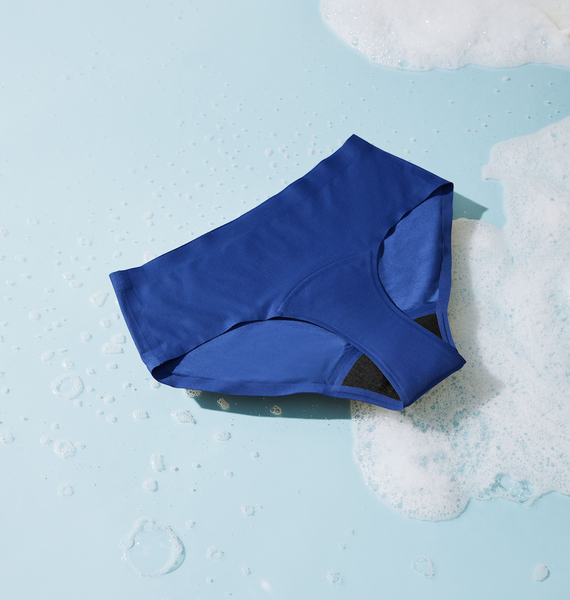For most people, a blotchy period stain is something to be avoided at all costs. But not everyone is afraid of a little bit of blood. Enter: free bleeding.
So what is free bleeding?
Free bleeding is when a person decides to menstruate without using period products to collect the flow of blood. (Some people consider wearing period underwear to be free bleeding, others don’t.) The practice of free bleeding is incredibly ancient, especially since period products didn’t come into popular usage until the end of the 19th Century. Though many historians believe that in ancient Egypt, women fashioned softened cotton or papyrus into makeshift tampons, for many cultures around the world free bleeding was simply the norm.
However, free bleeding became politicized in the 1970s, after the discovery of Toxic Shock Syndrome (TSS), a Staphylococcus infection caused by using overly absorbent tampons. Alongside the rise of the second-wave feminist movement, women began to question why bleeding had become so taboo.
So why free bleed?
1. It’s an act of resistance
Free bleeding is a middle finger to the notion that period blood is disgusting, shameful or something that should be kept hidden. Free bleeding aims to dispel the stigma around blood, suggesting that there’s no need to hide a natural process like menstruation away. For example, why are people so ashamed of leaking? How come they have to say they have a “stomach ache” instead of just flat-out saying they're on their period? Why does everyone feel the need to hide their tampons in their sleeves while making their way to the bathroom at school?
2. Period products are expensive
Not only is purchasing period products over and over again very expensive, the reality is that many people have no choice but to free bleed. Period poverty affects 16.9 million people living in the United States every year. According to the Journal of Global Health Reports, two-thirds of the low-income menstruators in the US “could not afford menstrual products in the past year, with a half of this needing to choose between menstrual products and food.” Lynette Medley, founder of the nation’s first-ever menstrual hub in Philadelphia, bravely shared her story of period poverty with Kt here. Learn more about how you can get involved in the fight against period poverty.
3. Pads and tampons are bad for the environment
Disposable period products have a huge negative on the environment. According to National Geographic, a single menstruator typically uses more than 15,000 disposable period products (tampons, pads), in their entire lifetime, which adds up to 5,800,000,000 tampons used in the United States in 2018 alone.
And that’s just one single year. Menstrual products and their packaging have been filling up landfills since the first disposable pad was introduced to the world in the late 1800s and many of these products contain dioxins that eventually get soaked up by the Earth and cause water and air pollution. Click here to learn more.
A race to better free bleeding alternatives
Even though free bleeding isn’t exactly new, it was thrust back into the spotlight in 2015 by a 26-year-old marathon runner named Kiran Gandhi. On the day of the London Marathon, her period arrived unexpectedly (we've all been there). Instead of backing out of the race, she decided to go with the flow— ditching her tampon and pad to free bleed the entire 26 mile run comfortably.

Images of Gandhi went viral, which sent sparks flying across the world— with people debating over what was “acceptable” when it came to menstruation. Gandhi made it clear that environmentalism was a vital aspect of her impromptu activism:
"If we cannot talk about our own bodies comfortably, how can today's best innovators know what we even want, and then go and build a better and more eco-friendly product? Women's bodies have never been burdensome to the Earth, and the products we use to care for ourselves should not be either"
What free bleeding looks like today
There are quite a few newer sustainable alternatives to tampons and pads (notably the menstrual cup) — but “modern” free bleeders often opt for period underwear. Although it’s not going completely commando, they curb the waste build-up of disposable period products, and are a more accessible and cost effective option in the long run. They’re also simply more comfortable, which is a win for people who don’t like the feeling of tampons or pads. Consider having your teen switch to period underwear for practical and sustainable solution!

There is no right or wrong way to have a period, and people who menstruate are free to use products that make them feel good. Whether your teen wants to give free bleeding a try (even with the help of period underwear), or they decide it’s not for them, the choice is theirs.


